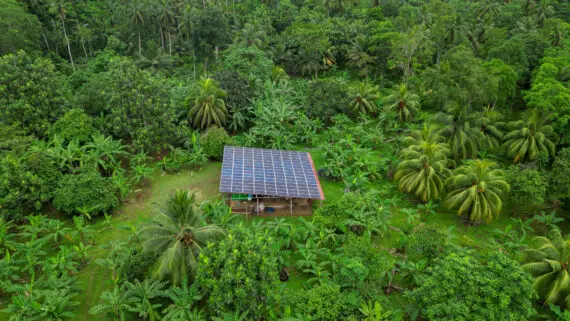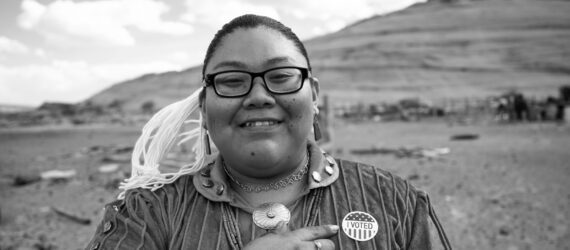By Isabel Vander Molen
Ending hunger in a sustainable way, a way that lasts, depends on resolving its root causes. Among these contributing factors is climate change, one of Bread for the World’s priority issues.
A visible sign of climate change is natural disasters that are increasingly severe and happen more frequently. In the past decade, according to World Food Program USA, 1.7 billion people have been impacted by climate disasters.
Lower-income countries have done little to cause climate change, yet these countries are more vulnerable to climate impacts. According to William R. Sutton, Global Lead for Climate Smart Agriculture at the World Bank, “About 80 percent of the global population most at risk from crop failures and hunger from climate change are in Sub-Saharan Africa, South Asia, and Southeast Asia, where farming families are disproportionately poor and vulnerable.”
These groups of people have the fewest resources to help them recover from disasters. They may have lost family members and homes. The land may no longer be suitable for farming. Essential infrastructure, such as roads or crop storage, may have been destroyed. It may be difficult or impossible for families to replace lost livestock or to buy enough food to last until their replanted crops are ready to harvest. For many families, the only real options are to remain in camps for displaced people or refugees for months or years, or to relocate somewhere where they may know no one.
Ultimately, it is up to the countries that produce the most greenhouse gases to achieve net zero carbon emissions as quickly as possible. Climate change “mitigation,” or avoiding and reducing emissions of heat-trapping greenhouse gases, is the type of climate action that will shape life on Earth for current and future inhabitants.
In the meantime, however, effective adaptation actions can reduce the human suffering caused by climate impacts. Climate “adaptation” means adjusting to a changing climate to reduce the risk of harmful effects from actual or expected impacts whether sudden ones like typhoons or slower onset but equally devastating impacts like prolonged drought. Examples of adaptation efforts include establishing early warning systems to help people survive disasters, enforcing building codes to protect homes and schools, and enabling people to reduce their risks by diversifying their ways of earning income.
The global community has begun to recognize that there are now climate impacts that cannot be reversed or adapted to with our current knowledge. One example is areas where temperatures have risen so high that they are uninhabitable. These impacts will require solutions that go beyond adaptation and mitigation. A fund to respond to the losses and damages incurred by adverse climate shocks was established recently to enable people to address such situations.
Investments in adaptation can be effective. Bread has long emphasized that hunger is unnecessary. The world produces enough food to go around. Investments in adaptation can complement emergency humanitarian assistance to create the conditions necessary to end hunger for good.
The strategy of combining climate adaptation and humanitarian assistance has a major problem, however: there is not enough financial support. According to the United Nations Environmental Programme 2023 Adaptation Gap Report, international public finance flows need to be between 10 and 18 times more than their current levels to meet the needs. Further, a very low percentage of climate finance— 4.3 percent— is invested in agrifood systems, yet these systems are the most vulnerable to climate change.
It is essential to unlock additional financial support for climate adaptation. One idea is for governments to work in partnership with private sector businesses. Such “blended finance” would entail governments helping to mitigate the risks businesses face in the early phases of projects.
A potential model for public-private partnerships is the renewable energy sector. Renewable energy is energy derived from natural sources that can be replenished more quickly than it is consumed. It includes wind and solar energy. Government policy support for renewable energy has been a successful combination in expanding the sector and reducing costs. Since 2010, the growth of the sector has been exponential. The cost of solar energy fell by 85 percent in 11 years, between 2010 and 2021.
Public-private partnerships are not a panacea, however. As the U.S. government proposes the establishment of these partnerships under initiatives like the President’s Emergency Plan for Adaptation and Resilience (PREPARE), the criteria for choosing participating companies must prioritize sustainability, transparency, and impact by fully including the local private sector and ensuring that the most vulnerable people benefit from new projects.
Reducing climate change costs—in loss of life, health, and biodiversity, and in damage to infrastructure and crops—depends on closing the adaptation gap by finding ways to encourage more investment in climate solutions for the agrifood sector and beyond.
Isabel Vander Molen is a climate-hunger fellow, Policy and Research Institute, with Bread for the World.



